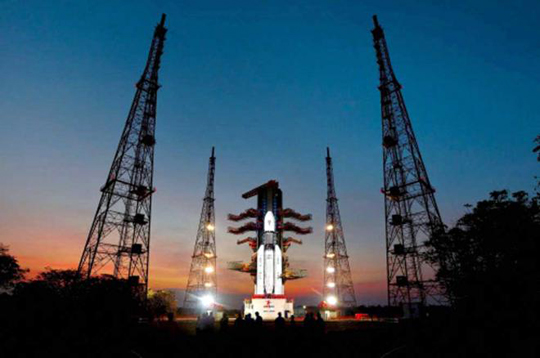Chennai, Jun 5: Taking a big leap forward in the space technology, the Indian Space Research Organisation (ISRO) successfully launched its heaviest rocket GSLV-Mk-III carrying communication satellite at country's spaceport in Sriharikota near here.

GSLV-Mk-III, the first of its kind mission, is capable launching four ton class of satellites to Geosynchronous Transfer Orbit (GTO). The GSLV rocket is the first developmental flight, carrying 3,136 kg GSAT-19 satellite to a GTO.
The GSLV rocket took off from the second launch pad at SDSC SHAR in Sriharikota about 90 kilometres from north Chennai at 5.28 pm. After about 16 minutes into its flight, the rocket successfully placed GSAT-19 in its intended orbit.
Soon after the GSLV-Mk-III mission success Indian Space Research Organisation (ISRO) Chairman A.S.Kiran Kumar said it was a historic day.
Stating that the heavy rocket was designed in 2002, Kiran Kumar said that after a gap of 15 years, the ISRO team were able to achieve the successful launch of GSLV-Mk-III.
He congratulated the entire ISRO team which worked hard on the GSLV mission.
ISRO sources said that the design and development of GSLV Mk III is based on ISRO's rich experience in handling solid, liquid and cryogenic rocket propulsion technologies. The first suborbital test flight of GSLV Mk- III was successfully conducted on December 18, 2014.
GSAT-19 satellite with a lift-off mass of 3136 kg, is the communication satellite of India, configured around the ISRO"s standard I-3K bus.
GSAT-19 carries Ka/Ku-band high throughput communication transponders. Besides, it carries a Geostationary Radiation Spectrometer (GRASP) payload to monitor and study the nature of charged particles and the influence of space radiation on satellites and their electronic components.
GSAT-19 also features certain advanced spacecraft technologies including miniaturised heat pipe, fibre optic gyro, Micro Electro-Mechanical Systems (MEMS) accelerometer, Ku-band TTC transponder, as well an indigenous Lithium-ion Battery.





Comments
Add new comment